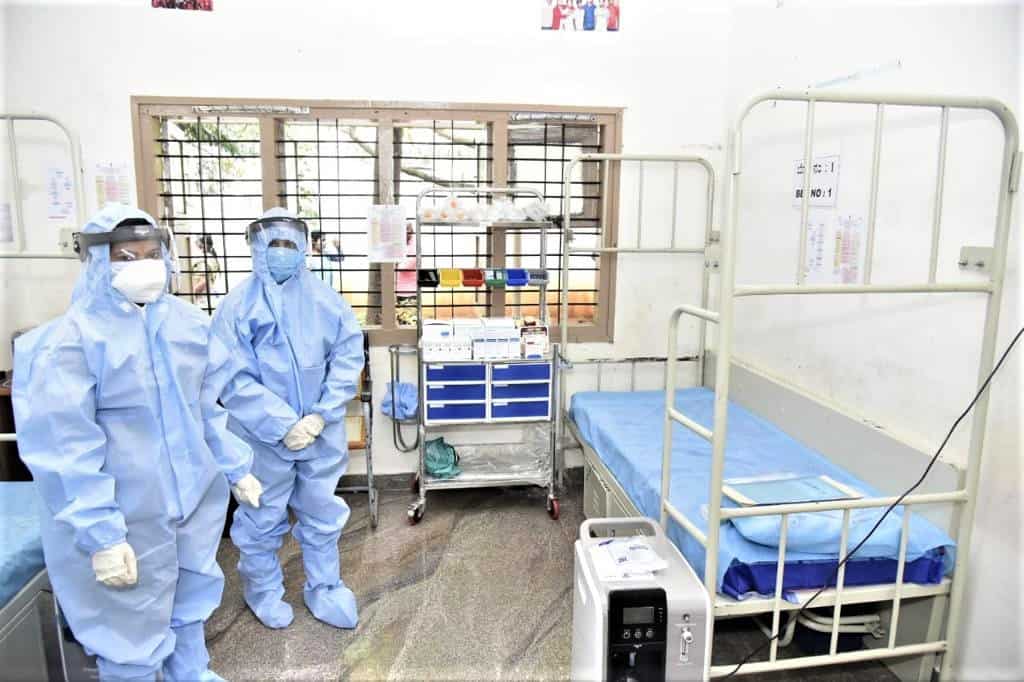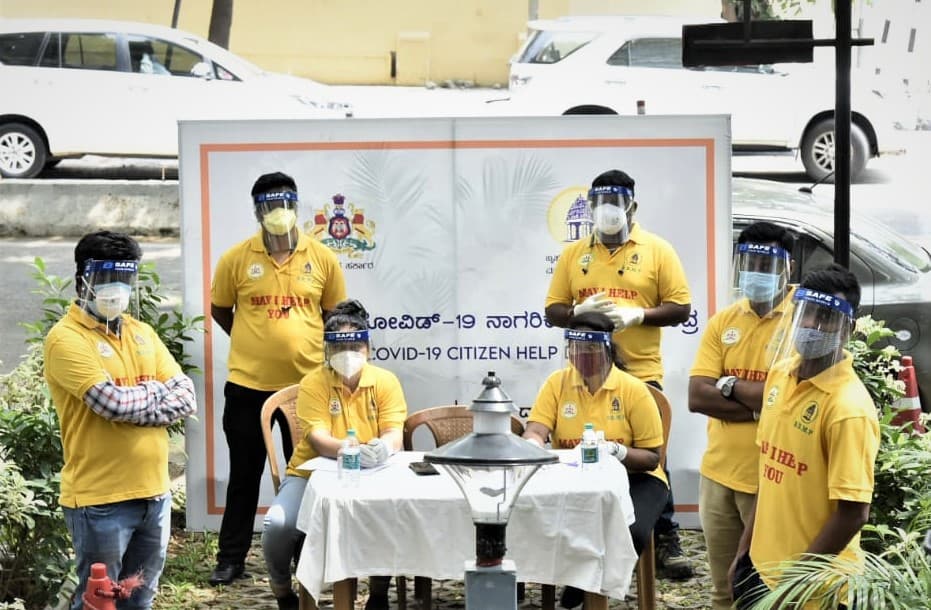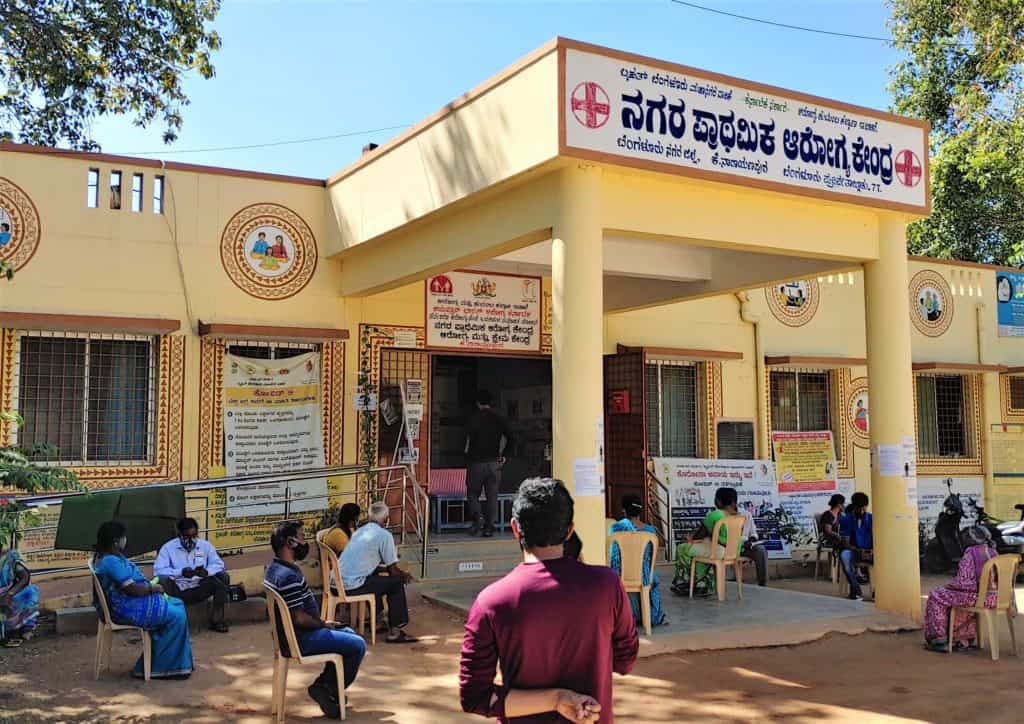“Healthcare in the city (BBMP) has been found wanting during the pandemic.” That was the first salvo fired by Deputy Chief Minister C.N Ashwath Narayan, who also heads the state’s COVID Task Force, to pin the entire blame for the failures in COVID management during the second wave on the Bruhat Bengaluru Mahanagara Palike (BBMP).
The second salvo was the proposal to divest the BBMP of all its public health responsibilities, including COVID management, and create a separate Bengaluru Health Directorate under the Department of Health and Family Welfare.
This exposes the confused thinking of the state government. Such a takeover will be in direct contradiction to its own move of setting up decentralised Ward Disaster Management Cells (WDMCs) under the BBMP, as recently as on May 7, as per Section 6(8) of the Ward Committee Rules.
Read More: How ward committees can help Bengaluru handle COVID-19 better
The setting up of such cells became necessary after revelations that hospital beds were being blocked by staff in centralised war-rooms and being allotted after collecting money for the same. What shocked the conscience of the entire state was that this was happening even while patients were gasping and dying outside hospitals for lack of beds.
With this came the realisation that centralised war-rooms will not help in managing COVID and that decentralised management at the ward level with the involvement of citizen volunteers is the way forward.
BBMP’s ward-level response yet to take off
The WDMCs have since been renamed “Ward Decentralised Triage and Emergency Response (DETER) Committees” under the BBMP. They were set up based on the Mumbai model. Mumbai’s success in controlling COVID is being attributed to Commissioner Iqbal Chahal setting up such decentralised, ward-level war rooms.

Despite the above experience of the failure of centralised zonal war-rooms, centralising the powers again in a body under the state government is inexplicable. It appears to be an attempt by MLAs to gain control of all powers over Bengaluru without being accountable to its citizens.
What is being forgotten is that Karnataka is the forerunner in decentralisation, as Ward Disaster Management Cells (WDMCs) are mandated in its Ward Committee Rules and these were also set up in Bengaluru in April 2020 through the intervention of Karnataka High Court Chief Justice Abhay S Oka. But the actual reason for the failure of BBMP to manage COVID lies in the fact that these WDMCs were made dysfunctional due to the indifference of councillors towards institutionalised mechanisms for involving citizens in ward-level governance.
Later, when the BBMP Council’s term came to an end in September 2020, Nodal Officers were put in charge of the WDMCs. But they too failed to keep the WDMCs running. This is what the State government should have set right rather than taking away these functions from BBMP.
Read more: Nodal officers appointed for COVID orphans, ICU beds, corporate aid
So if the Directorate is established, will the WDMCs continue to function under the BBMP or will their functioning be overseen by the Directorate, which would be accountable to the State government, making the BBMP a powerless bystander in its own jurisdiction.
Multiple agencies causing confusion
The reason given for setting up the directorate is that there are many agencies carrying out public health functions in Bengaluru and the proposed Bengaluru Health Directorate will bring them all under one umbrella. Even today, as pointed out by an official, only the PHCs come under the BBMP while the tertiary hospitals come under the state government.
What the government needs to do is to carry out ‘Activity Mapping’ spelling out roles and responsibilities of the state, district and BBMP, and not take over the responsibilities of BBMP!
As CIVIC, which works on issues of urban governance with a rights-based approach, has been advocating since long, basic services, such as Early Childhood Care & Development (ECCD), education, health and housing, need to be devolved to Urban Local Self-Governments (ULSGs) as per the 74th Constitutional Amendment. The aim is to make urban local governments “Plan for economic development and social justice”.
Violation of the 74th amendment?
In line with this, some BBMP officials have opposed the state government’s proposal to take over COVID duties from the BBMP saying that the 74th Amendment mandates that healthcare should be with the urban local body and not under a government department. They have reiterated that the urban local body should have a “significant and decisive role in planning, provision, and delivery of services, which includes health. So, it will not be constitutionally valid to take these powers away from BBMP”.
The wisdom of changing horses in midstream, so to speak, while the city is dealing with a pandemic is also questionable.
Other officials supporting the move to set up the Directorate point out that the proposal will not be in violation of the 74th Amendment, since a “new directorate specific to Bengaluru will be created”, and will be similar to the Bangalore Electricity Supply Company Limited (BESCOM) which supplies electricity to Bengaluru “but is independent of the BBMP”.
One can also cite the example of the BDA which does the planning for Bengaluru and BWSSB which is in charge of water supply and sewerage. These agencies work within BBMP’s jurisdiction but are answerable to the state government. There is also the move to set up a parastatal, like BWSSB, for solid waste management.
It has to be noted that all these are either obligatory functions of BBMP or are listed for devolution to ULSGs in the 12th Schedule of the Constitution under the 74th Amendment. True, BBMP itself may not have the required manpower, technical expertise or capability to deliver services efficiently in all these different sectors. But the crucial point is, should such bodies, which may have the technical expertise to function efficiently, be accountable to the BBMP or to the state government? This is the violation of the 74th Amendment that needs to be examined.
What happened to the Polling Booth-level Committees?
The other initiative that failed was the setting up of Polling Booth-level Committees. LK Atheeq, Principal Secretary, RDPR, was asked to mobilise community participation in managing COVID. Though there were a lot of volunteers willing to chip in and help at the grassroots level, their energies had not been channelized in an organised and systematic manner through training and capacity building.

Atheeq hence set up Polling-Booth-Level Committees to channel volunteers’ efforts to provide humane, doorstep monitoring of COVID cases and delivery of services to the needy by the Booth-Level Officers (BLOs) and residents of the Area.
Read More: These Bengaluru volunteers filled gaps in COVID management
But since every Polling Booth Area (PBA) had not been notified by the Urban Development department as the ‘Area’ for constituting Area Sabhas, this idea too failed to take off, though the requirement to constitute Areas and Area Sabhas have been in the rule-books since 2011. Hence there was no way of doing intensive work at the electoral booth-level with volunteers for door-to-door monitoring of those affected by COVID, as was so successfully done in Kerala.
Kerala has shown over the last two decades the advantages of devolution of public health functions to local governments with extensive citizen participation. This has brought tremendous benefits to the state in responding to COVID.
Lack of public health infrastructure
Bengaluru has only 144 primary health care centres (PHCs), six referral hospitals, 26 maternity hospitals and eight tertiary hospitals. This means that in a metropolis like Bengaluru, 54 out of 198 wards don’t even have a PHC and there is not even one referral hospital in its 28 Assembly segments. And the eight tertiary hospitals are likely to be all concentrated in the central area leaving the outlying zones uncovered.

That this is the situation more than 10 years after Bengaluru was declared the pilot city for launching the Urban Health Mission is a telling narrative about the indifference shown to universalising health care by MLAs and BBMP councillors alike. This is the real failure.
The State government is now proposing to build a 100-bed, hi-tech hospital in every assembly segment and a super-speciality hospital for every four assembly segments. These are long-overdue issues that should have been prioritised and given prominence in all budgets.
Read more: BBMP budget: Is 336 cr enough to manage Covid, fix a broken healthcare system?
The need for bottom-up planning
When Phase I of COVID waned, WDMCs should have been engaged in bottom-up planning, to ensure adequate availability of human and physical resources for health care. They should have been drawing up an inventory of available resources, listing the gaps in terms of the infrastructure, number of doctors, nurses, and other staff, testing and scanning facilities and number of beds required as per population of the ward; and ensuring the required availability of oxygen, ventilators, vaccines, medicines etc. That this was not done, is the cause of the frenzy of the pandemic’s second wave.
In the urban context, pandemic/disaster preparedness, response and mitigation are affected by poor health infrastructure, high vulnerability of the urban poor and migrants living in slums/make-shift tents in cramped and unhygienic conditions, without safe drinking water supply and sewerage and proper solid waste management. Unplanned settlements, encroachments, and insufficient regulation/enforcement of building standards heighten the vulnerability to floods, fires, etc. Failure to do this is the cause of the on-going tragedy.
This is what needs to be set right by bottom-up planning from the Area Sabhas and Ward Committees under the BBMP. It cannot be done by taking away these functions from the citizens and the ULSGs; higher levels of the government have no overview about ground-level realities in the nooks and corners of a city!
Greetings subject matters discussed here are very appropriate. very well articulated . By the way does Citizen Matters helps to escalate issues of individual citizens grievances or lay out’s to the authorities ? Would feel much obliged for your kind response for resolution?… Warm Regards
Thank you for appreciative words. Citizen Matters should reply to your query. I am only a contributor of articles to Citizen Matters.